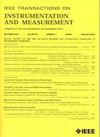Characterization of Inductive Signals of Polymetallic Particles Under Variable Frequency Conditions
IF 5.6
2区 工程技术
Q1 ENGINEERING, ELECTRICAL & ELECTRONIC
IEEE Transactions on Instrumentation and Measurement
Pub Date : 2025-04-17
DOI:10.1109/TIM.2025.3557111
引用次数: 0
Abstract
As the detection channel of an inductive particle sensor increases, it is inevitable that multiple particles will pass through the sensor simultaneously. However, the movement of multiple particles in fluid and magnetic fields, especially their aggregation behavior, can allow particle sensors to generate misleading wear signals. Therefore, to estimate the influence of the multi-particle aggregation effect on the accuracy of inductive sensors, this study constructed a magnetic coupling model of abrasive particles in strip structure and built the experimental platform required for the study, to investigate the difference in inductance change due to magnetic coupling effect among multiple metal particles at different frequencies. The experimental results reveal the phenomenon of inductance change of the three-particle combinations of the strip structure under two different conditions: in the “sequential entry” type of strip structure, the vortex effect between particles exhibits a mutual weakening, while in the “simultaneous entry” type, the vortex effect between particles exhibits a mutual enhancement. In the “simultaneous entry” type, the eddy current effects between the particles are characterized by mutual enhancement. These findings not only provide a new perspective for understanding the aggregation detection of polymetallic particles but also provide a theoretical basis for improving the accuracy of the sensor.多金属粒子在变频条件下的感应信号表征
随着电感式粒子传感器检测通道的增加,不可避免地会有多个粒子同时通过传感器。然而,多个颗粒在流体和磁场中的运动,特别是它们的聚集行为,可能会使颗粒传感器产生误导性的磨损信号。因此,为了评估多粒子聚集效应对电感传感器精度的影响,本研究构建了条形结构中磨料颗粒的磁耦合模型,并搭建了研究所需的实验平台,研究不同频率下多个金属颗粒之间的磁耦合效应对电感变化的影响。实验结果揭示了两种不同条件下带状结构三粒子组合的电感变化现象:在“顺序进入”型带状结构中,粒子间的涡旋效应相互减弱,而在“同时进入”型带状结构中,粒子间的涡旋效应相互增强。在“同时进入”型中,粒子之间的涡流效应以相互增强为特征。这些发现不仅为理解多金属颗粒聚集检测提供了新的视角,也为提高传感器的精度提供了理论依据。
本文章由计算机程序翻译,如有差异,请以英文原文为准。
求助全文
约1分钟内获得全文
求助全文
来源期刊

IEEE Transactions on Instrumentation and Measurement
工程技术-工程:电子与电气
CiteScore
9.00
自引率
23.20%
发文量
1294
审稿时长
3.9 months
期刊介绍:
Papers are sought that address innovative solutions to the development and use of electrical and electronic instruments and equipment to measure, monitor and/or record physical phenomena for the purpose of advancing measurement science, methods, functionality and applications. The scope of these papers may encompass: (1) theory, methodology, and practice of measurement; (2) design, development and evaluation of instrumentation and measurement systems and components used in generating, acquiring, conditioning and processing signals; (3) analysis, representation, display, and preservation of the information obtained from a set of measurements; and (4) scientific and technical support to establishment and maintenance of technical standards in the field of Instrumentation and Measurement.
 求助内容:
求助内容: 应助结果提醒方式:
应助结果提醒方式:


